Flowers for Brooklyn (Farmed in Hudson Valley), with Tiny Hearts Farm and Taproot Flowers (Episode 189)
April 15th, 2015
Podcast: Play in new window | Download
Subscribe: Apple Podcasts | Google Podcasts | Podcast Index | RSS | More
I’ve often talked about the exciting changes we’re experiencing with the Slow Flowers Movement as a “cultural shift,” not a Trend.
I credit sustainability expert and founder of Ci: conscientious innovation, Kierstin DeWest, the very first guest of this podcast in July 2013, for teaching me this concept. Trends are often momentary; cultural shifts are significant, meaningful and long-lasting changes in the marketplace.
There is a cultural shift taking place that is redefining the relationships consumers, florists and flower farmers have with one another. This is happening at all levels of the flower pipeline, from U.S. Flower Farms large and small seeking Certified American Grown status to brand and label their flowers – in order to satisfy the demands, especially at the mass market – for transparency in flower origin, to the grassroots efforts, region by region, to connect the people who grow flowers with the people who design and sell them.
In the past year, I’ve interviewed or heard from groups in Oregon, Sacramento, California’s North Bay Wine Country, western Pennsylvania, Ohio, and in New York’s Hudson Valley – all of whom realize that together we are stronger and have the potential for more economic success than going it alone. The collective energies of many are driving momentum for all.
Today’s guests are a case study to illustrate this problem-solving model.
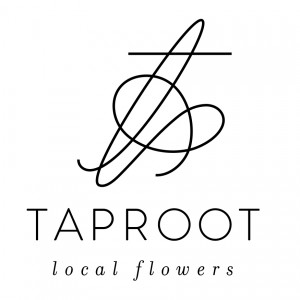
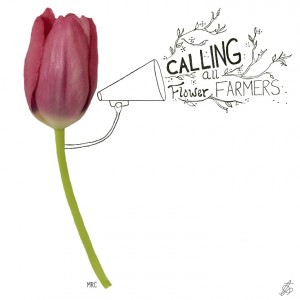 What is the problem? One of the top barriers is transportation. It’s hard for florists in urban/metro markets to get to the usually rural area where flowers are grown. And imagine how much variety florists need – even if a designer had the time to drive to the country to pick up her flowers, would she have time to drive to 5 different farms? That’s unrealistic.
What is the problem? One of the top barriers is transportation. It’s hard for florists in urban/metro markets to get to the usually rural area where flowers are grown. And imagine how much variety florists need – even if a designer had the time to drive to the country to pick up her flowers, would she have time to drive to 5 different farms? That’s unrealistic.
Similarly, the flower farmer needs to do what he or she does best: Grow Great Flowers.
So driving and delivering is a necessary distraction that takes them out of the fields and greenhouse. Obviously, the challenges of transporting flowers is being overcome – people have to find a solutions and there are probably as many solutions as there are flower farmers and florists.
As the year unfolds, I’ll be collecting the stories of people who are tackling this issue. I invite you to join me as we explore the creative steps folks are taking to sell and source American Grown Flowers.
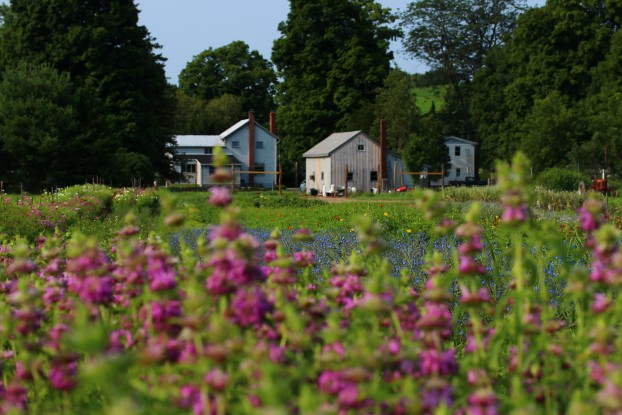
Aaaah, what an idyllic place: Tiny Hearts Farm. Picture Jenny and Luke seated in the kitchen of their farmhouse during the recording of our podcast.
Please meet Jenny Elliott and Luke Franco of Tiny Hearts Farm based in Copake, New York.
I first learned about Jenny and Luke from famed garden writer and podcaster Margaret Roach (who was gardening editor and eventually editorial director for MSL back in its true heyday).
Margaret invited me to be a guest on her popular gardening podcast, A Way to Garden,” last December to talk about the Slow Flowers Challenge.
She immediately and proudly shared that her own small Hudson Valley community a few hours north of NYC was home to a new specialty cut flower farm, Tiny Hearts. It was so nice to have the “a ha” connection already made for Margaret, thanks to Jenny and Luke’s involvement in the local agriculture community of Copake.
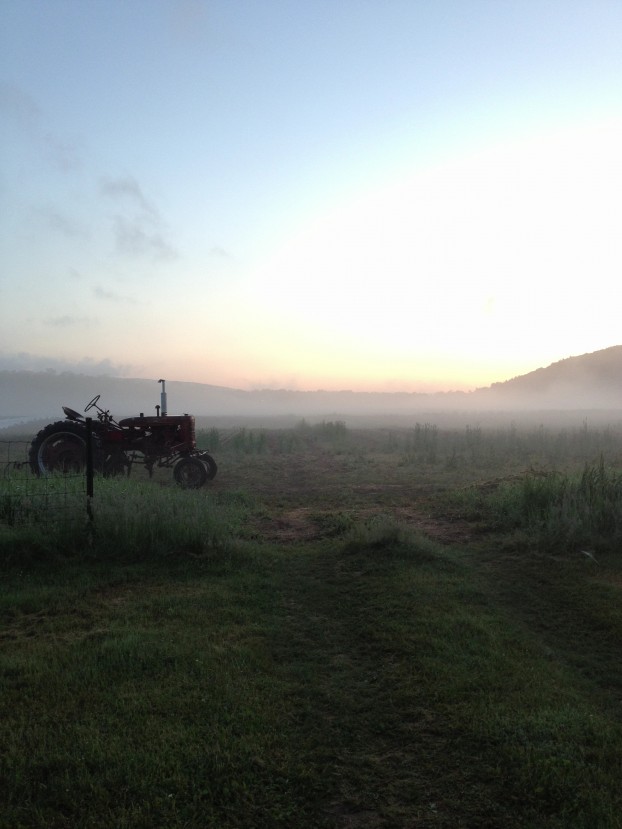
Place is so important to the story of the American flower farm. This scene helps us understand how valuable it is to preserve agricultural places like the land where Tiny Hearts Farm is rooted.
I was delighted that Tiny Hearts joined and listed their farm with Slowflowers.com, but we had yet to meet.
A month or so ago, I received an email from Rachel Gordon, a Brooklyn-based floral designer, who wanted me to know that she was beginning to work out a way for Tiny Hearts to get their flowers into NYC-Brooklyn with a regular delivery route.
The hoops a flower farmer has to jump through to get his or her beautiful bunches and stems into any urban market are many; I have seen it first hand with the Oregon and Washington growers who are members of the Seattle Wholesale Growers Cooperative, where I’m on the board. It isn’t easy, folks.
But needless to say, the twin boroughs of New York City and Brooklyn are particularly tricky.
It takes the collective will and desire to pull it off and you will hear the ways Jenny and Luke, along with their client and instigator Rachel are approaching 2015’s big wedding season with the intention of getting more local flowers to the marketplace there.
As Rachel wrote in her email to other designers and florists in the city: “I know that for many florists, collaborating with their “competitors” can be awkward…but I really, really think that we should all try to work together to make locally grown flowers more accessible in New York City. If we were a united front — oh, think of the collective buying power we’d have! It could have a tremendous impact, both for us and the flower farmers in our region.”
After our recording, I received a follow up note from Rachel wanting to tell me that she’s also going to be able to source Connecticut-grown flowers this coming season.
Evelyn Lee will be delivering flowers straight from her Butternut Gardens Flower Farm in Southport, Connecticut, from mid-Spring through Fall. As Evelyn wrote in an email:
My farm is not large by any stretch, but in past years I have supplied several farmers’ markets, my own CSA, and have created wedding flowers using what I grow, and other blooms as needed. This year, I will forego the farmers’ markets and commence a wholesale delivery service in addition to continuing my CSA and my own wedding work.
Since I already have the great fortune of knowing several Brooklyn designers, and I LOVE what is going on in your little stretch of Paradise, I decided it was, “Brooklyn, here I come.”
This first year will be somewhat of an experiment for all of us, but I have great reason to believe it will be the start of bigger and better things! As I shift away from the farmers’ markets and into this new endeavor, I am making some shifts in what I grow. For example, I will replace some of the brighter colors (tons of red dahlias, for example) with more muted tones appropriate for a greater number of events, and I will likely reduce the number of varieties I grow so that I have larger quantities of offered product. Having said this, it is important to me to continue to grow certain flowers or foliage, which might not be so readily available elsewhere.
In Connecticut, we actually have a number of growers, most small in size, and some more specialized than others. This year I will be compare notes with these other growers along the way in hopes of identifying ways to create economies, combined flower deliveries and best ways to pool efforts and product so that we might work together productively as we move ahead.
HOW COOL IS THAT? Congratulations to both Tiny Hearts and Butternut Gardens for taking the leap to pursue NYC, the vast market for flowers. I’m eager to hear how this season unfolds and I’ll make sure to follow up for a report later this year.
PS, thank you Luke Franco, for sharing your original piece, “Scabiosa,” with the listeners and readers of The Slow Flowers Podcast. What a sultry piece for a sultry flower!
One more quick announcement: If you are in the PNW, please consider making a day trip on Saturday, April 18th to Triple Wren Farms in Ferndale, Washington (Whatcom County), owned by Sarah and Steve Pabody, past podcast guests. They’re hosting an Apple Blossom Celebration and Open Farm, 1 p.m,-7 p.m., a new venture that showcases Sm’Apples, the apple orchard they manage, and the beautiful flowers they grown at Triple Wren Farm.
Steven and Sarah have arranged to have a professional photography on hand to take family portraits in surrounded by the blossoming apple trees, and they will also have fresh flowers and raw honey for sale. Their invitation sounds so enticing: “Have you ever stood and breathed in the luxury of six acres of apple blossoms? Have you ever visited a working American specialty cut flower farm?
As sarah said when she invited me to attend: We’re trying to increase local awareness of American grown flowers and we hope to encourage others to do the same in their corner of the country..
Thanks for joining me this week and please return again, as I continue to share insightful and educational episodes recorded exclusively for the Slow Flowers Podcast.
Thanks to listeners, this podcast has been downloaded more than 43,000 times. If you like what you hear, please consider logging onto Itunes and posting a listener review.
The opinions expressed are either mine exclusively or my guests exclusively and have not been influenced by any other persons or organizations, including sponsors and advertisers.
The slow flowers podcast is engineered and edited by Andrew Wheatley and Hannah Holtgeerts. Learn more about their work at shellandtree.com.









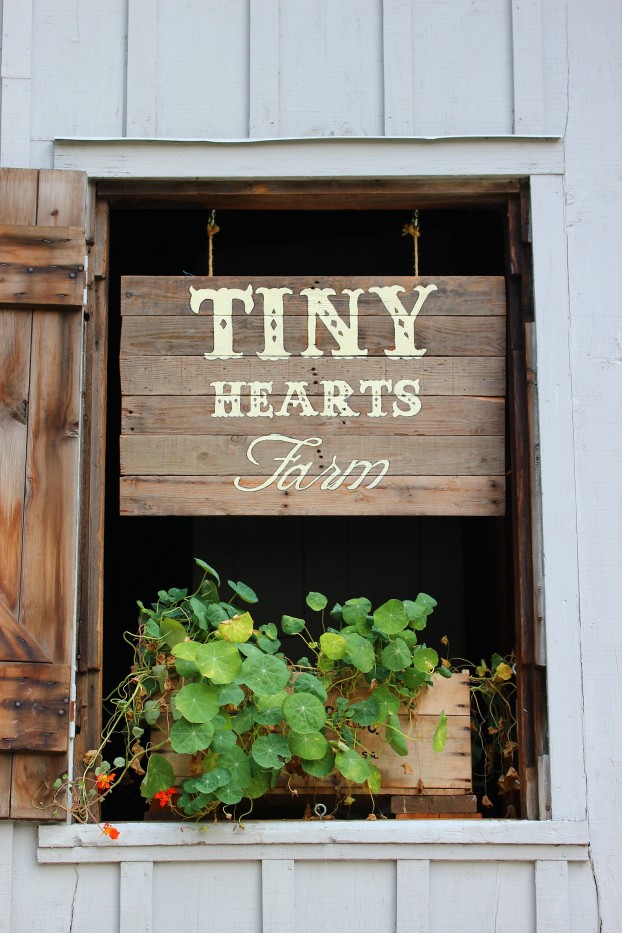
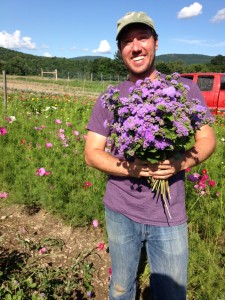
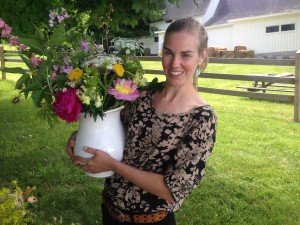
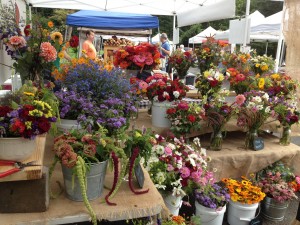
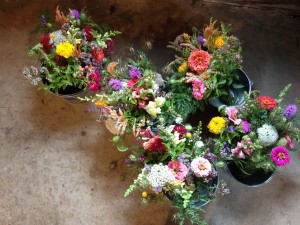
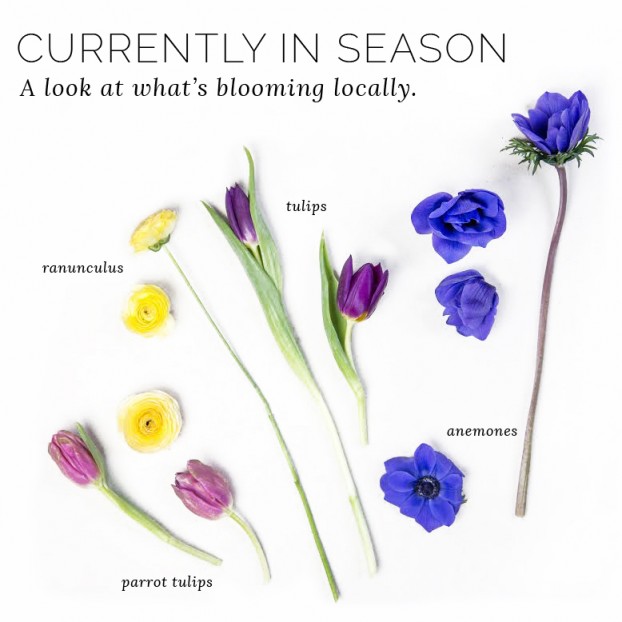
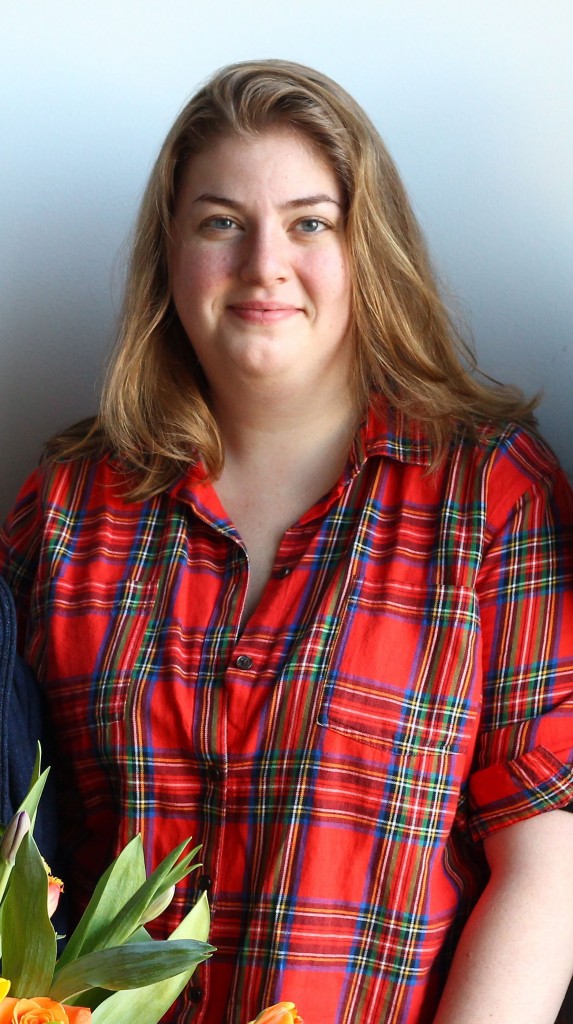
April 22nd, 2015 at 6:04 am
[…] Farm in New York’s Hudson Valley and Rachel Gordon of Taproot Flowers of Brooklyn, please check out more photos that I’ve added to the show notes. They’re onto something really special and I encourage you to listen if you missed that […]
April 26th, 2015 at 8:07 pm
Many thanks, Debra, for your continued efforts to increase awareness of, and appreciation for, Slow Flowers. I am very much looking forward to bringing flowers from Butternut Gardens in Connecticut to Rachel at Taproot Flowers and several other Brooklyn designers. Truly, the support from the Brooklyn designers’ end is remarkably positive. In Connecticut, we are, indeed, adding new flower farms every year, which is quite exciting indeed. Since we are all small, we absolutely will benefit from working together. I hope that this time next year we will have worked out any kinks related to distribution and will have a steady flow of flowers from several Connecticut farms – such an exciting thought. One of the best reasons to grow flowers is to share! Please come visit when you are on the east coast!
May 20th, 2015 at 6:38 pm
I enjoy your podcasts, Debra, and I just had a quick question. Can you share your citation for the definition of local? I think this was the episode you mentioned it in and I wasn’t even aware there was an official definition.
Hi Evangeline, thanks for asking the question! LOCAL is a moving target in the language of flowers! I think you have to decide for yourself what means locally-grown. There is a US Government “local” that Congress defined (specifically to food crops) that says if something is consumed within 400 miles from where it was grown, or within the state in which it was grown, it can be called LOCAL. No official designation exists for flowers so I suggest this as one measure of local. In my way of thinking, LOCAL changes with seasonal availability. In the peak of cut flower season for me (in Seattle), Local is my own garden or direct from my flower farm sources at the Seattle Wholesale Growers Market (all of whom farm within about 100-200 miles of Seattle). After the first frost, that becomes more challenging, and my definition of local shifts to include cut flowers from 2 states away – California. As soon as our gardens wake up again, that radius shrinks back to my own region or closer. Hope this helps.
October 20th, 2016 at 7:19 am
[…] previously featured some of the voices of this region, which you may recall from Episode 189 when I interviewed Jenn Elliott and Luke Franco of Tiny Hearts Flower Farm in Copake, New York, and […]